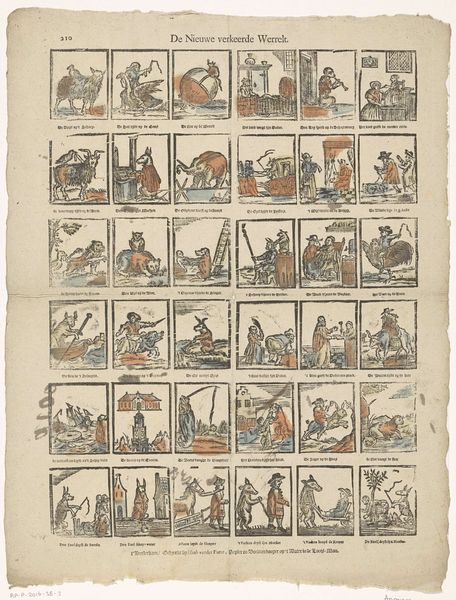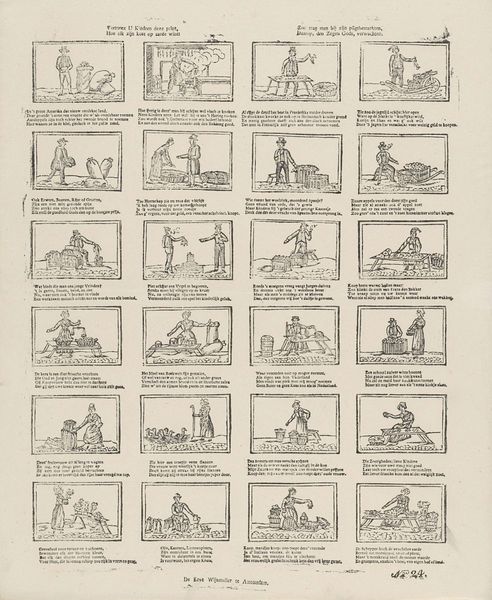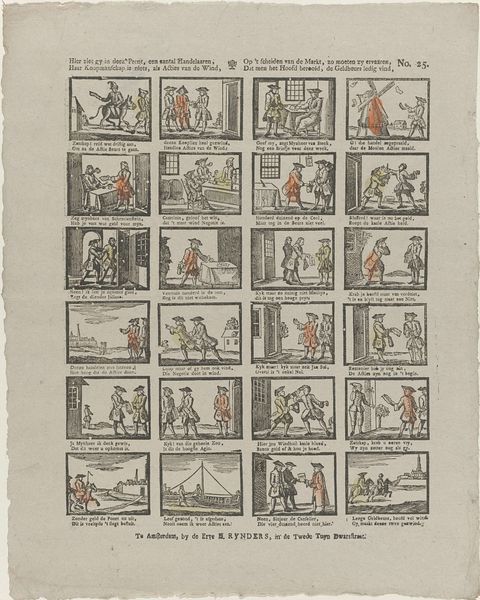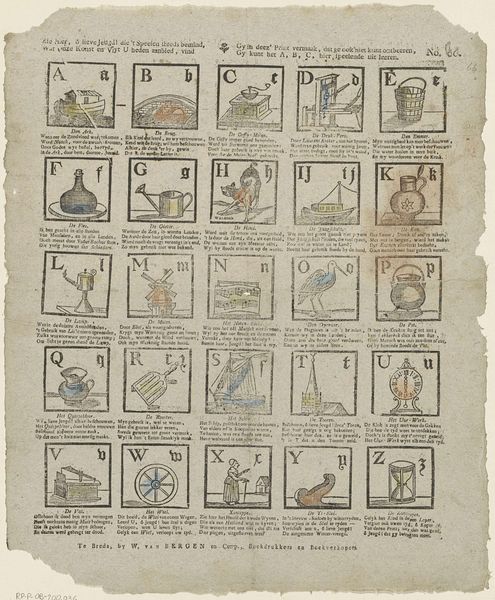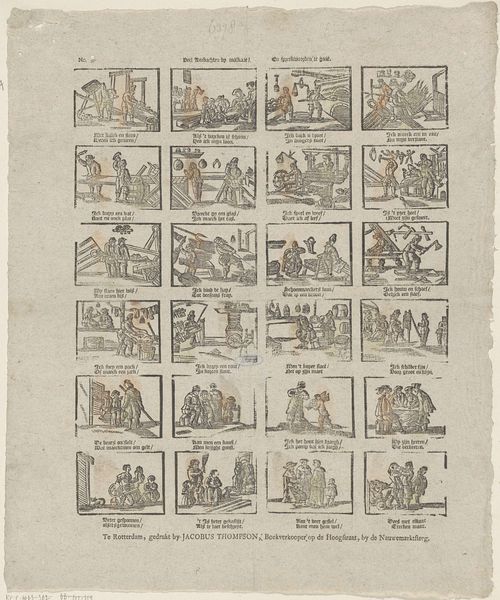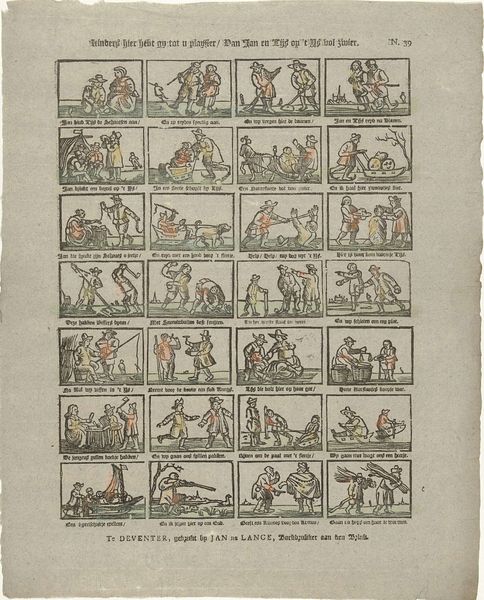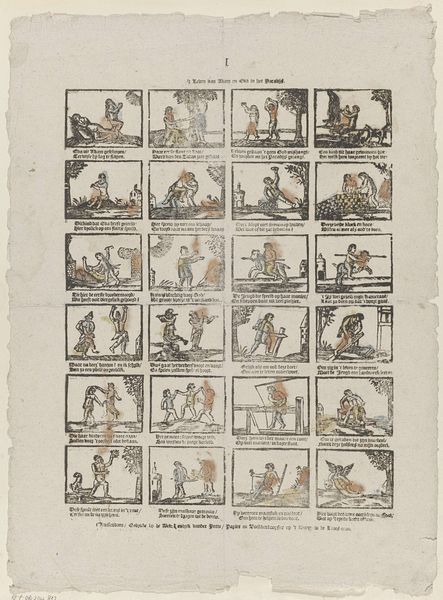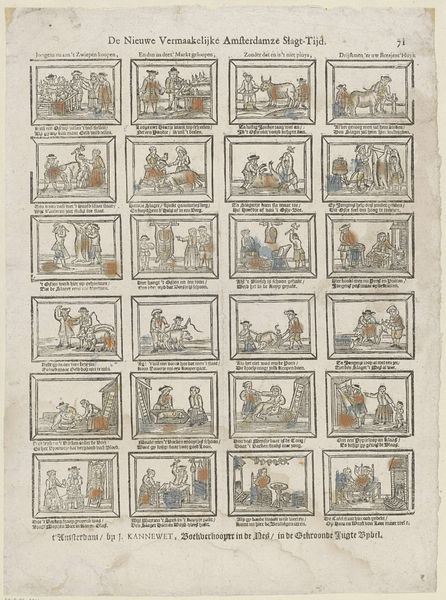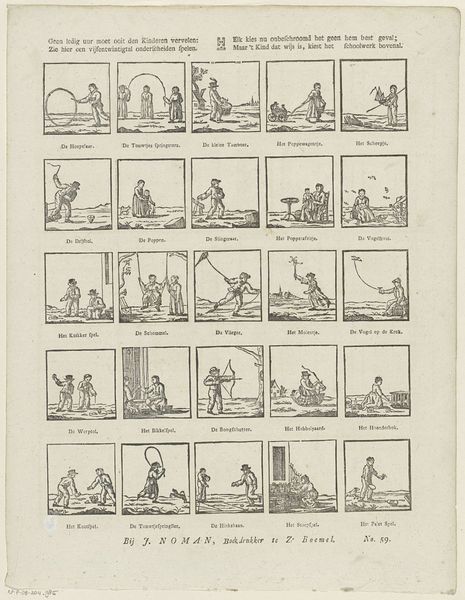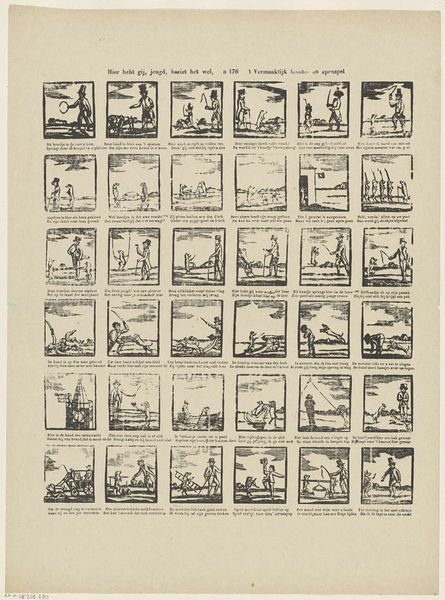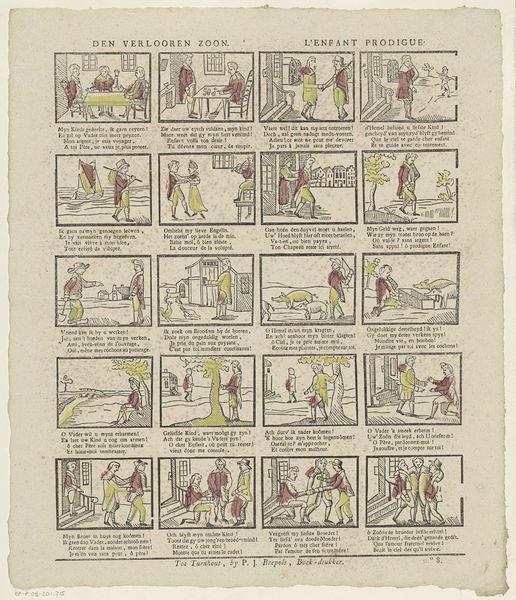
Hoe elk het sober kostje wind, / Vertoont u kinderen, deze print. / Wien steeds zijn pligten blijft betrachten, / Mag ook de zegen Gods verwachten 1832 - 1850
0:00
0:00
graphic-art, print, etching
#
graphic-art
#
comic strip sketch
#
quirky sketch
#
narrative-art
# print
#
etching
#
sketch book
#
personal sketchbook
#
sketchwork
#
thumbnail sketching
#
folk-art
#
pen work
#
sketchbook drawing
#
genre-painting
#
storyboard and sketchbook work
#
sketchbook art
Dimensions: height 390 mm, width 328 mm
Copyright: Rijks Museum: Open Domain
Curator: The Rijksmuseum holds this fascinating print by Theodorus Johannes Wijnhoven-Hendriksen, dating from 1832 to 1850. Its title is quite a mouthful: "Hoe elk het sober kostje wind, / Vertoont u kinderen, deze print. / Wien steeds zijn pligten blijft betrachten, / Mag ook de zegen Gods verwachten." Editor: That's a lovely, but wordy, title. At first glance, I'm struck by its repetitive composition. All these small vignettes crammed together suggest something mass-produced, or perhaps folk art? Curator: Precisely. It's an etching, so multiple impressions could be made. Consider the paper, too: likely cheap and readily available. The labor involved in both production and distribution would have been fairly straightforward. Editor: Tell me about that structure, though. Twenty-four separate little scenes. Each a perfectly framed miniature world with similar linear qualities that create a very interesting set of contrasting values... it has an intentionality, each its own perfectly enclosed narrative element! Curator: Exactly. We see various figures seemingly offering or selling goods, accompanied by Dutch text, presumably small moralistic lessons about the values of different types of work. It reads like a series of brief moral allegories that invite the viewer to consider deeper meaning. Editor: But why? Why all of these narratives condensed in a single tableau? Are they meant to highlight daily struggles and reinforce a social structure, through these printed sheets? Curator: Possibly. Wijnhoven-Hendriksen was, according to the text on the print itself, both a book and print seller on the Hoogstraat in Rotterdam. This print gives a material insight into Rotterdam's cultural landscape during the period. This was a man creating his income within his trade and immediate locality. Editor: I find myself focusing less on narrative meaning and more on that physical and labor commitment... each etched line slowly accruing, gradually generating these wonderful little scenarios on affordable prints distributed around his area. Fascinating. Curator: Yes, tracing the physical production definitely enhances our understanding of the artist and his context! Editor: Indeed, looking through this material lens definitely offers a valuable method to appreciate the cultural meaning of this detailed narrative-artwork!
Comments
No comments
Be the first to comment and join the conversation on the ultimate creative platform.
